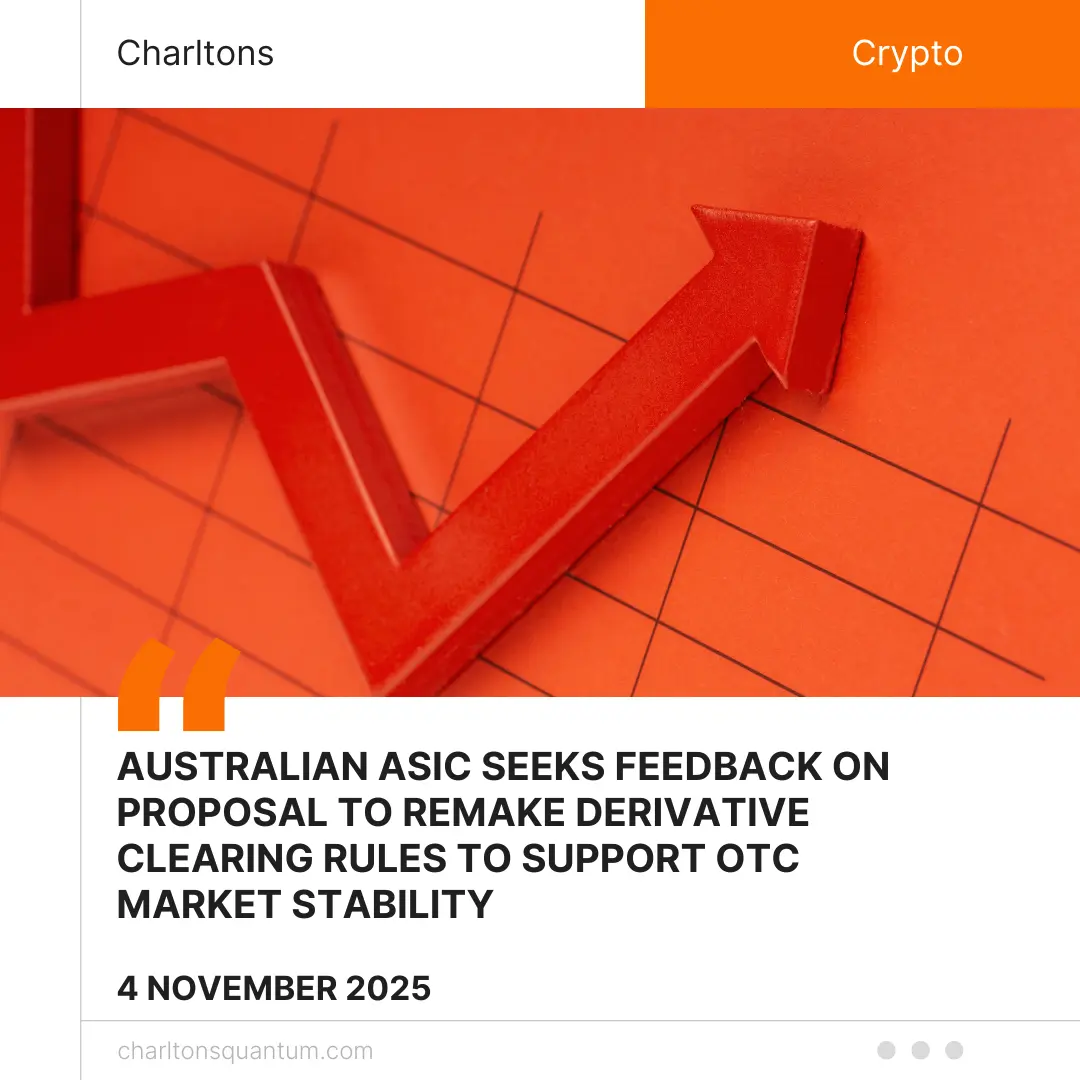
US SEC Division of Corporation Finance Issues Interpretive Statement on the Regulatory Classification of Certain Stablecoins
On 4 April 2025, the United States Securities and Exchange Commission (US SEC), through its Division of Corporation Finance, issued an interpretive statement titled statement on stablecoins, providing regulatory clarity on the treatment of certain fiat-backed stablecoins under federal securities laws. The document confirms that specific stablecoins, termed “Covered Stablecoins” do not constitute securities when issued and redeemed under defined parameters.
- Covered Stablecoins are defined as digital assets pegged one-to-one to the United States Dollar (USD), fully backed by low-risk, highly liquid reserve assets, and redeemable on demand without limitation.
- The US SEC’s Division of Corporation Finance opined that the offer and sale of Covered Stablecoins do not involve a “security” under the United States Securities Act of 1933 or the United States Securities Exchange Act of 1934 and are not subject to registration requirements.
- To support the opinion, the statement further delved into the application of the precedent set in Reves v. Ernst & Young, 494 U.S. 56 (1990) test to stableocins on the tests listed below:
- Buyers are motivated by transactional use or storage of value, not profit.
- Distribution is not designed for speculative trading.
- Covered Stablecoins are not marketed as investments.
- Reserves are maintained in segregated accounts composed of USD cash, U.S. Treasury securities, or registered money market funds.
- It was further supported with the application of the precedent set in SEC v. Howey Co., 328 U.S. 293 (1946) test and the statement reasoned that ‘Covered Stablecoins’ do not involve an investment of money in a common enterprise with an expectation of profit from the efforts of others.
- The statement further put certain obligations and conditions such as ‘Covered Stablecoins’ must not convey ownership rights, profit entitlements, or voting power and must not be used for operational activities, pledged, lent, or exposed to third-party claims.
- It further requires Proof-of-reserves or attestation mechanisms should preferably be used by issuers to demonstrate one-to-one USD backing.
- The stamen further restricts Marketing obligations which must align with non-investment purpose and must be promoted strictly as digital equivalents of fiat currency and not as investment vehicles.
- While closing the statement US SEC’s Division of Corporation Finance clarified that this statement does not represent a binding Commission determination and does not preclude future enforcement or judicial interpretation and adding that each stablecoin is subject to individual assessment based on its structure, reserve framework, redemption mechanics, and promotional conduct and therefore, for interpretive assistance, stakeholders are directed to the Office of Chief Counsel through the US SEC’s official communication channels.
To read this news in detail click here
Commissioner Crenshaw Warns Against Misleading Stablecoin Classification: Legal, Financial and Systemic Risks Overlooked in US SEC Division’s Staff Statement
On 4 April 2025, United States Securities and Exchange Commission (US SEC) Commissioner Caroline A. Crenshaw issued a formal response to the Division of Corporation Finance’s interpretive statement on stablecoins. In her statement, titled “Stable” Coins or Risky Business? Commissioner Crenshaw strongly criticised the Division’s conclusion that certain USD-backed stablecoins fall outside the purview of federal securities laws, describing the analysis as legally flawed, factually inaccurate, and systemically dangerous.
- In her dissent Commissioner Crenshaw argued that the Division’s characterisation of certain stablecoins as “non-securities” fails to meet the legal standards under the Reves v. Ernst & Young test and misrepresents how these products function in practice.
- She stated that over 90% of USD-backed stablecoins are distributed through intermediaries such as crypto trading platforms, and retail holders typically have no direct contractual right to redeem coins from the issuer.
- Clarifying the assertion and stating that holders have a right to one-to-one redemption is factually incorrect; intermediaries not issuers control retail redemption, often at prevailing market prices, not fixed parity.
- Crenshaw challenged the Division’s reliance on issuer reserve assets as a risk-reducing feature, stating that reserves do not collateralise coins held by retail purchasers, who have no direct claim to those reserves in insolvency.
- The critique emphasised that proof-of-reserve reports lack regulatory oversight, are unreliable, and provide no assurance about the solvency or operational risk of the issuer, thereby failing the Reves standard of collateralisation and investor protection.
- Crenshaw questioned whether any existing stablecoin genuinely meets the staff’s definition of “Covered Stablecoin,” criticising the staff’s assumptions about direct minting and redemption models that rarely reflect actual market practice.
- She noted that without proper legal rights or financial backing, USD-stablecoins are effectively uncollateralised, uninsured instruments, often distributed via opaque and unregulated intermediaries, posing significant risks to retail holders and the broader financial system.
- Crenshaw criticised the Division’s use of the term “digital dollar” to describe stablecoins, warning that such language misleads investors and falsely equates privately issued crypto assets with sovereign currency.
- She concluded that the Division’s statement undermines investor protection, risks legitimising high-risk instruments, and reinforces dangerous market narratives that misrepresent the stability of unregulated crypto assets.
To read this news in detail click here
Christina Choi’s Speech at Hong Kong Web3 Festival 2025: HK SFC’s Strategic Commitment to Web3 Ecosystem
On 7 April 2025, Ms. Christina Choi, Executive Director of Investment Products at the Hong Kong Securities and Futures Commission (HK SFC), delivered a keynote speech titled “Fuelling the Web3 and Digital Asset Ecosystem in Hong Kong” at the Hong Kong Web3 Festival. Her address set out the HK SFC’s long-term regulatory strategy for Web3 and digital assets, with emphasis on regulatory clarity, market infrastructure, and investor protection.
- Ms. Choi reaffirmed HK SFC’s commitment, aligned with Hong Kong Government policy, to foster a globally competitive Web3 ecosystem anchored in disciplined regulation rather than speculative hype.
- She discussed Hong Kong’s leadership in launching Asia’s first virtual asset (VA) spot exchange-traded funds (ETFs) in April 2024 and confirmed the jurisdiction’s status as the largest VA ETF market in the Asia-Pacific region.
- Ms. Choi announced that the HK SFC will permit staking for VA spot ETFs through licensed platforms, subject to strict conditions including asset custody requirements and limits on staked proportions.
- On tokenisation, Ms. Choi referenced the HK SFC’s 2023 circulars and detailed progress in launching retail tokenised funds, including three tokenised money market funds which is the largest such launch to date in Hong Kong.
- She stated that HKMA’s “Project Ensemble” pilot, co-led by the HK SFC, focuses on integrating tokenised money into asset management and product trading to accelerate settlement cycles and enhance liquidity.
- Ms. Choi reiterated that investor protection remains paramount as tokenised secondary markets evolve, citing continued regulatory caution over custody, liquidity, pricing, and decentralised market matching mechanisms.
To read this news in detail click here
US SEC Issues Disclosure Guidance For Crypto Asset Offerings and Registration
On 10 April 2025, the United States Securities and Exchange Commission (US SEC) published an interpretive statement titled “Offerings and Registrations of Securities in the Crypto Asset Markets” through its Division of Corporation Finance on the disclosure obligations for offerings and registrations of securities in the crypto asset markets. The guidance provides practical instruction for issuers offering securities linked to crypto assets, without altering the legal classification of such assets under federal securities laws.
- The statement clarifies disclosure expectations under the United States Securities Act of 1933 and the United States Securities Exchange Act of 1934 in connection with offerings involving crypto networks, applications, and token-based instruments.
- It identifies material disclosures necessary for investor protection, including development milestones, technical operations, consensus mechanisms, smart contract features, token supply protocols, and governance structures.
- For crypto assets qualifying as securities, the guidance also mandates disclosure on transferability, custody arrangements, and smart contract auditability.
- The Division of Corporation Finance specifies that even where a crypto token does not independently qualify as a security, it may be included within a securities offering based on the manner of issuance and associated representations.
- The guidance applies to traditional equity and debt offerings, as well as securities offerings involving NFTs, utility tokens, and blockchain-based platforms.
- Commissioner Hester M. Peirce acknowledged the statement in her accompanying remarks titled Let’s Talk Disclosure, highlighting it as a step toward improving investor access to material project information.
To read this news in detail click here
US SEC Disclosure Guidance Signals Shift Towards Clarity in Crypto Asset Offerings
On 10 April 2025, the United States Securities and Exchange Commission (US SEC), through its Division of Corporation Finance, issued a detailed interpretive statement clarifying disclosure obligations in connection with offerings and registrations of securities within the crypto asset markets. The guidance, publicly endorsed by Commissioner Hester M. Peirce in her statement Let’s Talk Disclosure, addresses longstanding industry concerns over the absence of a tailored disclosure framework. Without seeking to redefine the security status of crypto assets, the US SEC is set to provide issuers with practical compliance parameters under the United States Securities Act of 1933 and the United States Securities Exchange Act of 1934.
- The guidance applies to both traditional securities (equity and debt) and crypto assets that may qualify as investment contracts under federal securities laws.
- Commissioner Hester M. Peirce stated that the statement moves beyond the previous vague directive to “come in and register,” offering instead a concrete compliance reference.
- It targets a spectrum of issuers, including decentralised application developers, token-linked fundraisers, and digital gaming platforms issuing debt or NFTs.
- Required disclosures include development milestones, technical design and consensus methods, smart contract specifications, governance structures, and token supply mechanisms.
- For crypto assets treated as securities, additional disclosures must cover transferability, custody standards, and whether the smart contract code is auditable.
- The US SEC Division of Corporation Finance confirmed that even if a token is not intrinsically a security, it may still fall within a securities offering framework depending on its issuance context.
- The statement is a step in identifying relevant disclosures so that investors have material information about the projects and businesses in which they are investing
To read this news in detail click here
US SEC Commissioner Caroline A. Crenshaw Calls for Regulatory Clarity and Governance Readiness at AI Roundtable in Washington DC
On 27 March 2025, at the United States Securities and Exchange Commission’s (US SEC) Roundtable on Artificial Intelligence in the Financial Industry, Commissioner Caroline A. Crenshaw delivered a speech addressing the urgent need for definitional clarity, oversight structures, and regulatory coherence and the transformative impact of artificial intelligence (AI) on the financial sector talked about the importance of ensuring that governance systems evolve in parallel with innovation.
- Recalling the proposed rule on Predictive Data Analytics by the Divisions of Investment Management and Trading and Markets dated 12 July 2023, which aimed to mitigate conflicts of interest in AI-driven investor interactions and acknowledged that the proposal had received mixed reactions from the industry.
- She noted an issue raised all over the globe i.e. the lack of a universally accepted definition of AI within financial services and noted that such imprecision is hindering constructive discourse and regulatory planning. She raised a series of fundamental questions to panelists and regulators which are:
- How should AI be defined in the financial services context?
- What are AI’s current and emerging use cases across broker-dealers, investment advisers, and investors?
- Is AI more operational or customer-facing in its implementation?
- Who holds responsibility over opaque, “black box” models that cannot be fully interpreted?
- Calling for clarity on aspects like, who governs and oversees the use of AI when fiduciary duties, their trading decisions, or client communications and stated that the responsibilities must not be diluted by automation.
- Elaborating over the adequacy of AI-related disclosures to investors and questioning whether such information is consistent and sufficient for informed decision-making.
- There are some systemic risks associated with unchecked AI deployment such as fraud, manipulation, volatility, and erosion of trust being among the foremost threats which must be treated as priority.
- Describing AI as a “sea-change,” she stated that regulatory agencies, particularly the US SEC, must equip themselves with the tools, structures, and foresight required to respond effectively.
- Commissioner Crenshaw’s speech made clear that the advancement of AI must be matched with deliberate and thoughtful regulatory strategy—one that addresses definitional, procedural, and ethical dimensions without compromising investor protection or market integrity.
To read this news in detail click here
US SEC Acting Chairman Mark T. Uyeda Urges Technology-Neutral Approach at Artificial Intelligence Roundtable
On 27 March 2025, United States Securities and Exchange Commission (US SEC) Acting Chairman Mark T. Uyeda delivered a keynote address at the Commission’s Roundtable on Artificial Intelligence in the Financial Industry, held at the US SEC headquarters in Washington, D.C. His remarks set the tone for a full-day engagement with market participants, academics, and regulatory experts on how AI technologies intersect with financial regulation. He advocated a measured, innovation-forward, and empirically grounded approach to AI oversight, stating that regulatory frameworks must not stifle progress through rigidity or premature prescription.
- Uyeda placed AI development within a broader historical context of financial innovation, referencing the stock ticker, electronic trading, and telephone networks as past examples of technology integration into market infrastructure. He stated that the US capital markets’ continued global leadership is due in large part to their ability to incorporate technological advancements.
- Examining the current regulatory proposals concerning predictive data analytics which may unintentionally inhibit innovation, especially if they impose prescriptive rules that fail to keep pace with the speed of technological change or are misaligned with real-world applications.
- He noted that burdensome compliance obligations imposed too early in AI’s development cycle could deter legitimate applications and place U.S. firms at a competitive disadvantage globally.
- Questioning whether the US SEC should regulate tools like predictive data analytics and machine learning on the basis of their technology or their outcomes. In doing so, he raised the policy dilemma:
- Should regulation be structured around the nature of the tool, or should it focus on whether the tool’s use results in investor harm or market distortion?
- Uyeda raised an interesting question on risk evaluation: “Do we have sufficient empirical evidence to determine whether a specific AI system causes bias, opacity, or systemic harm? Or are we projecting theoretical concerns without data support?”
- Uyeda emphasised that many AI tools, particularly those used for internal automation, risk assessment, or software development are not inherently dangerous and should not be treated with the same regulatory scrutiny as investor-facing or advisory tools.
- Questioning whether the US SEC’s current rulemaking process accommodates sufficient feedback loops from innovators, software developers, and non-traditional market participants, urging deeper engagement to avoid regulatory disconnects.
- Uyeda acknowledged the importance of inter-agency collaboration and asked whether AI regulation in financial markets should follow a harmonised framework across federal agencies or whether tailored, sector-specific rules are more effective.
To read this news in detail click here
Artificial Fears and Human Intelligence: US SEC Commissioner Hester M. Peirce Advocates a Thoughtful, Human-Centred Approach to AI Regulation
On 27 March 2025, at the United States Securities and Exchange Commission (US SEC) Roundtable on Artificial Intelligence in the Financial Industry, Commissioner Hester M. Peirce delivered a speech that discussed prevailing fears around artificial intelligence (AI) and advocated for clarity and appropriate regulation rooted in humility, precision, and adaptability. Speaking to a broad group of participants and industry experts at the US SEC’s Washington D.C. headquarters, Peirce called for a departure from fear-based policymaking and encouraged a measured, human-centred approach as AI’s role in finance continues to evolve.
- rejecting alarmist narratives surrounding AI and label of many current concerns as “artificial fears,” cautioning that broad, undifferentiated regulation may miss the real risks while stifling innovation.
- While questioning the US SEC’s current proposal on predictive data analytics and she warned that it may be overly sweeping and disconnected from the nuanced realities of AI’s varied use cases.
- US SEC must first identify specific problems and risks before imposing new regulatory frameworks, echoing the principle that regulation should respond to demonstrated harms, not hypothetical concerns.
- Commissioner Peirce posed questions to guide the conversation and give a direction to the regulatory challenges ahead and to get to explore the realities of AI transformation such as:
- Which areas of financial services will be most affected by AI in the next five years?
- What type of guidance, if any, do firms need from the US SEC to navigate AI integration?
- How can such guidance be structured to remain technology-neutral and durable?
- How can regulators distinguish between truly risky AI applications and benign or beneficial uses?
- Comparing AI to a pair of four-year-old twins which are quick to learn, full of surprises, and not easily predicted and with a hope that AI systems can evolve constructively when guided thoughtfully.
- Cautioning against building regulatory regimes around extreme cases and calling for proportionate rules informed by ongoing market realities to effectively regulate AI.
To read this news in detail click here
US SEC’s Commissioner Hester Maria Peirce’s “The Mother” Speech: US SEC’s Willingness to Embrace Innovation While Confronting Jurisdictional Hurdles in U.S. Crypto Regulation
On 11 April 2025, United States Securities and Exchange Commission (US SEC) Commissioner Hester Maria Peirce delivered her opening remarks at the second session of the Crypto Task Force roundtable series, titled “The Mother” The address centred on the Commission’s ongoing challenge of reconciling regulatory obligations with technological innovation, calling for targeted reforms, inter-agency coordination, and experimental allowances for crypto market models. Commissioner Peirce’s remarks underscored the urgent need to modernise existing regulatory frameworks to accommodate decentralised systems and crypto-native business practices, without compromising market integrity or investor protection.
- Commissioner Peirce stated that U.S. securities regulation must adapt to support diverse business models in centralised and decentralised trading venues, rather than restrict them under legacy frameworks, without stifling innovation, competition, and investor choice in the crypto asset markets.
- Commissioner Peirce delved into the rising market interest in trading securities against crypto assets (e.g., stablecoins), making a remark that while not expressly prohibited, such practices are not currently addressed under existing recordkeeping, reporting, and market structure rules.
- She discussed the lack of adequate regulatory provisions for hybrid trading models and suggested the need for tailored guidance or amendments to account for crypto-native practices.
- Raising jurisdictional concerns, Commissioner Peirce questioned how the US SEC should proceed when crypto firms engage in integrated securities and non-securities trading, a space that often crosses into overlapping or ambiguous regulatory boundaries.
- She further stated that she looks forward to Congressional action to address legislative gaps and inter-agency inconsistencies, keeping in view, the growing need for federal and state-level alignment in crypto oversight.
- US SEC can explore the use of its exemptive authority to permit controlled pilot programs or “regulatory sandboxes” for crypto intermediaries to test new models under defined conditions.
- Citing the US SEC’s history, she applauded earlier transitions, such as the adoption of electronic brokerage systems and Regulation ATS to demonstrate how the US SEC has previously modernised rules in response to innovation.
- concluding with a metaphor comparing current crypto legal issues to apple cider vinegar’s “mother,” showing that although complex and unrefined, these regulatory challenges can yield beneficial outcomes if addressed thoughtfully and constructively.
To read this news in detail click here
MIAX Sapphire Advances Rule Change with US SEC to Launch Options on VanEck Spot Bitcoin ETF
On 15 April 2025, the United States Securities and Exchange Commission (US SEC) published a notice of proposed rulemaking (File No. SR-SAPPHIRE-2025-18) concerning MIAX Sapphire, LLC’s application to amend Exchange Rule 402 and permit the listing and trading of options on the VanEck Bitcoin Trust, to integrate regulated crypto-derivative products into the United States options market, using the framework of the United States Securities Exchange Act of 1934.
- The proposal seeks to amend ‘Exchange Rule 402’ to include the VanEck Bitcoin Trust as an eligible underlying security for options trading, leveraging its status as a commodity-based ETF holding spot Bitcoin.
- The application was filed under Section 19(b)(1) and Rule 19b-4 of the United States Securities Exchange Act of 1934, and the the application relies on precedent including the US SEC’s prior approval of CboeBZX-2023-040 to show its alignment with Rule 402(i)(5) for ETFs representing interests in commodity pools and trusts.
- The VanEck Bitcoin Trust purports that it meets regulatory benchmarks: such as, over 49 million shares outstanding, 32,000+ beneficial holders, and 133 million shares traded over six months, satisfying Rule 402(b) numerical criteria.
- The ETF purportedly qualifies as a national market system (NMS) stock under Regulation NMS Rule 600, fulfilling Exchange Rule 402(a).
- The options will be physically settled, American-style contracts cleared by the Options Clearing Corporation (OCC), with expirations in weekly, monthly, and LEAPS formats per Rules 404 and 510.
- Position and exercise limits are proposed at 25,000 contracts, governed by MIAX Rules 307 and 309, with margin requirements set under Rule 1502.
- Surveillance protocols include participation in the Intermarket Surveillance Group (ISG), agreements with MIAX and MIAX Pearl, and oversight under a Regulatory Services Agreement with FINRA.
- The rule change draws from the US SEC’s January 2024 Bitcoin ETP Approval Order, referencing the high correlation between CME Bitcoin futures and the spot market to validate surveillance effectiveness.
- The proposal invokes Section 6(b)(5) of the United States Exchange Act, arguing that the rule change would enhance investor protection, deter manipulation, and improve transparency in Bitcoin derivatives trading.
- The US SEC invites public comments within the 45–90 day statutory review period to assess regulatory alignment, market integrity, and investor safeguards.
To read this news in detail click here
UK FCA Marks Operational Resilience Deadline: Regulated Firms Must Now Embed Resilience as a Strategic Imperative
On 15 April 2025, Suman Ziaullah, Head of Technology, Resilience and Cyber at the United Kingdom Financial Conduct Authority (UK FCA), issued a blog titled “Operational resilience: beyond regulatory raincoats” following the industry-wide operational resilience deadline of 31 March 2025. While firms have met the mandated compliance requirements, the blog by UK FCA clarified that the regulatory journey now transitions from formal adherence to continuous, embedded governance and resilience must now become an intrinsic part of corporate culture, boardroom strategy, and operational execution and no longer just a “regulatory raincoat”.
Under the finalised UK operational resilience framework, the following regulatory obligations were imposed on in-scope firms:
- The UK FCA has shifted its focus from documentation to effectiveness in crisis response. It will scrutinise how well firms anticipate disruption, adapt under pressure, and protect market integrity and consumer interests in real-time. The goal is to ensure firms move from “just carrying an umbrella” to having institutional foresight and structural resilience when navigating future storms.
- By 31 March 2022, firms were required to identify important business services, set impact tolerances for maximum tolerable disruption, and initiate scenario testing at a level proportionate to their business.
- By 31 March 2025, firms were required to complete comprehensive mapping and testing of their important business services to ensure continuity within defined tolerances under severe but plausible scenarios.
- The framework applies to a wide array of entities regulated by the UK FCA and/or the Prudential Regulation Authority (PRA), including:
- Banks and building societies
- PRA-designated investment firms
- Insurers
- Recognised Investment Exchanges
- Enhanced scope SM&CR firms
- Firms authorised under the Payment Services Regulations 2017 or the Electronic Money Regulations 2011
- European Economic Area (EEA) firms remain excluded from the scope.
- From this point forward, the UK FCA expects:
- Board-level accountability for embedding resilience into strategic governance.
- Scenario design to reflect failure conditions capable of revealing true operational vulnerabilities.
- Ongoing preparedness through robust testing, clear communications protocols, and continuous learning from post-incident reviews.
To read this news in detail click here





